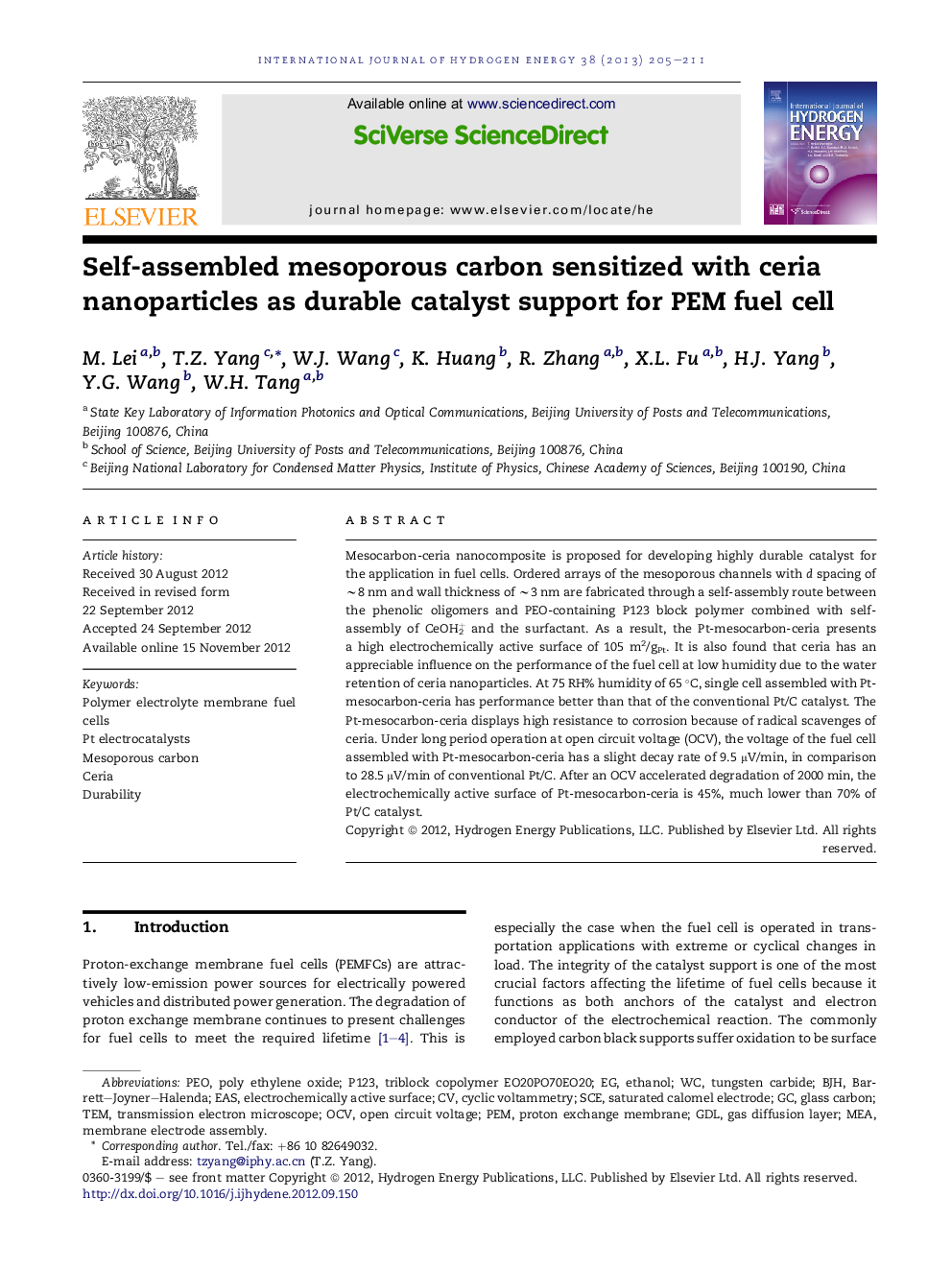| Article ID | Journal | Published Year | Pages | File Type |
|---|---|---|---|---|
| 1274365 | International Journal of Hydrogen Energy | 2013 | 7 Pages |
Mesocarbon-ceria nanocomposite is proposed for developing highly durable catalyst for the application in fuel cells. Ordered arrays of the mesoporous channels with d spacing of ∼8 nm and wall thickness of ∼3 nm are fabricated through a self-assembly route between the phenolic oligomers and PEO-containing P123 block polymer combined with self-assembly of CeOH2+ and the surfactant. As a result, the Pt-mesocarbon-ceria presents a high electrochemically active surface of 105 m2/gPt. It is also found that ceria has an appreciable influence on the performance of the fuel cell at low humidity due to the water retention of ceria nanoparticles. At 75 RH% humidity of 65 °C, single cell assembled with Pt-mesocarbon-ceria has performance better than that of the conventional Pt/C catalyst. The Pt-mesocarbon-ceria displays high resistance to corrosion because of radical scavenges of ceria. Under long period operation at open circuit voltage (OCV), the voltage of the fuel cell assembled with Pt-mesocarbon-ceria has a slight decay rate of 9.5 μV/min, in comparison to 28.5 μV/min of conventional Pt/C. After an OCV accelerated degradation of 2000 min, the electrochemically active surface of Pt-mesocarbon-ceria is 45%, much lower than 70% of Pt/C catalyst.
► C–CeO2 composite is proposed for developing highly durable catalyst in fuel cells. ► Mesoporous channels with d spacing of 8 nm and thickness of 3 nm are formed. ► Pt-mesocarbon-ceria presents a high active surface of 105 m2/gPt. ► The Pt-mesocarbon-ceria displays high resistance to corrosion.
